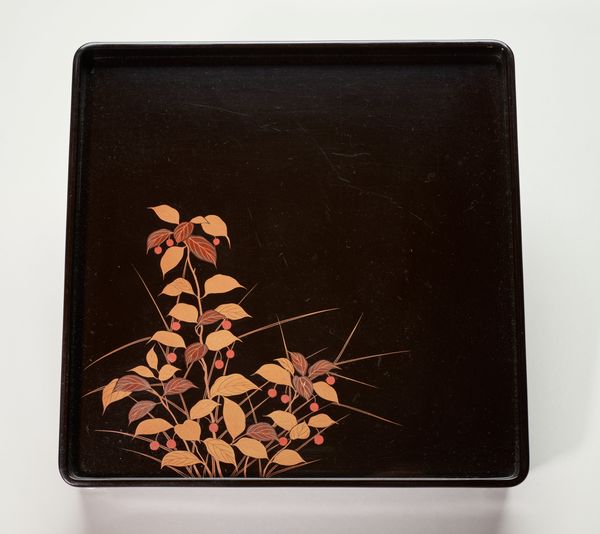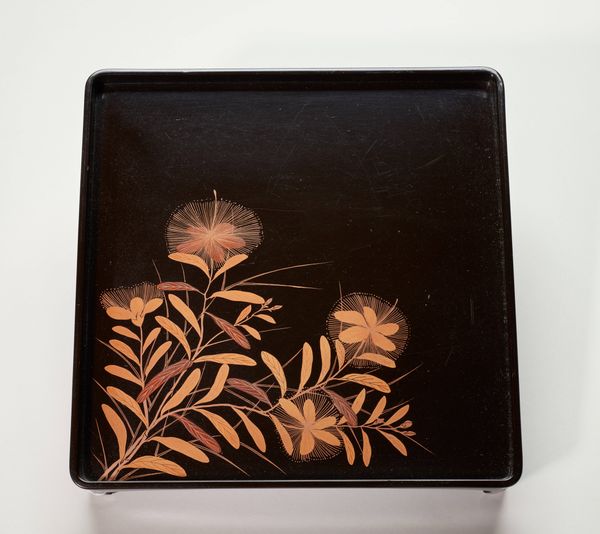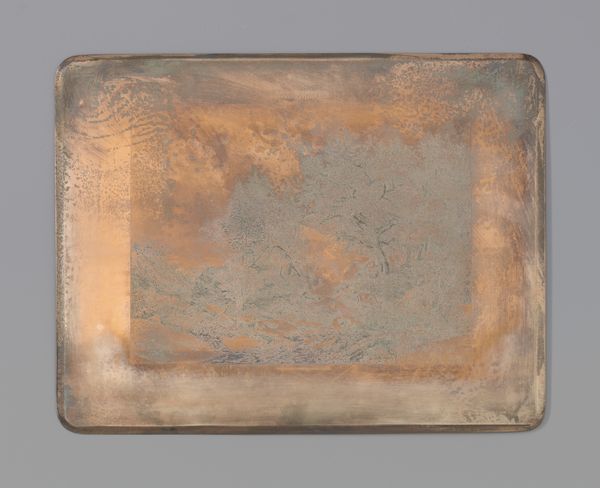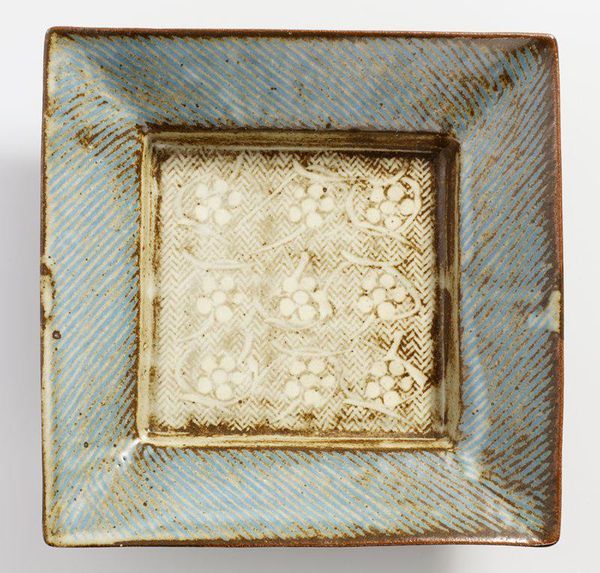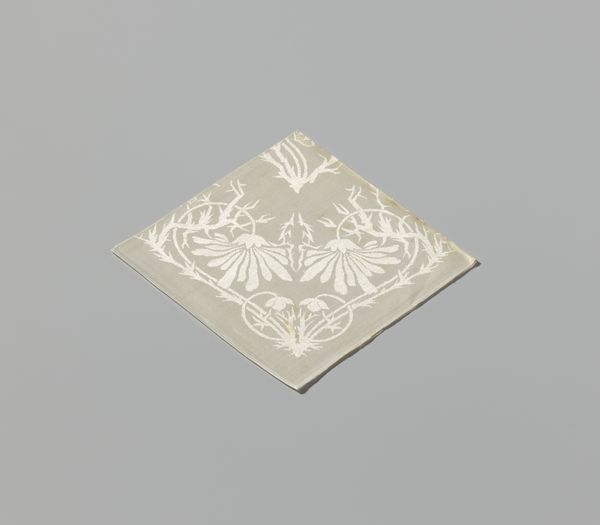
Small Serving Tray with Pampas Grass Design c. late 18th century
0:00
0:00
wood
#
asian-art
#
japan
#
wood
#
decorative-art
#
decorative art
Dimensions: 2 1/2 × 10 3/4 × 10 13/16 in. (6.35 × 27.31 × 27.46 cm)
Copyright: Public Domain
This small square serving tray, attributed to Yamamoto Shunshō VI, was made in Japan, probably in the late 19th century. It is made of lacquered wood with inlaid designs in contrasting materials. The pampas grass design is rendered in a spare, elegant style that would resonate with the aesthetics of the Japanese tea ceremony, in which trays like these were often used. Japanese art of this period was deeply intertwined with the social rituals of hospitality and domestic life. Serving trays were more than mere functional objects; they were canvases for expressing cultural values and artistic sensibilities. The design motifs employed had deep roots in Japanese culture and can be explored through historical texts, museum collections, and studies of artistic traditions. Careful art historical analysis allows us to understand how artworks reflected and shaped the social fabric of their time.
Comments
minneapolisinstituteofart almost 2 years ago
⋮
Originally from a set of ten, the five trays on display here show a variety of plant motifs associated with the seasons, and executed in hiramaki-e (low sprinkled picture) with gold and pigmented powders. The bottom of one of the trays bears the seal “Shunshō,” for the family of lacquer artisans. The Shunshō school was established by Yamamoto Shunshō (1610–1682) and continued on until the end of the 19th century. Shunshō I was well known for his mastery of the togidashi-e (polished out picture) technique, which is used on these pieces. However, the naturalism of the plant designs indicates that this is a later piece by either Shunshō V (Jirobei, b. 1734) or VI (Masanori, d. 1803).
Join the conversation
Join millions of artists and users on Artera today and experience the ultimate creative platform.
